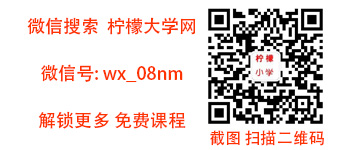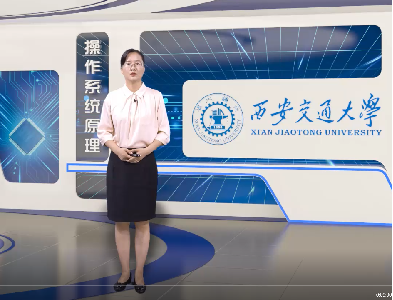
当前课程知识点:Macroeconomics > Chapter 7: The Solow Model with Capital Accumulation and Population Growth > 7.3 The Solow Model with population growth > The Solow Model with population growth
-1.1 What are we going to learn in Macroeconomics?
--What are we going to learn in this course?
--What are we going to learn in Macroeconomics
-1.2 How to study this course?
-2.1 The Measurement of GDP and GNP
--The measurement of GDP and GNP
--The measurement of GDP and GNP
-2.2 Nominal and real GDP
-2.3 Measuring the cost of living, CPI
--Measuring the cost of living, CPI
--Measuring the cost of living, CPI
--Quiz for Chapter 2
-3.1 Production function and the demand for factors of production
--Production function and the demand for factors of production
--Marginal product and the demand for factors of production
-3.2 Classical theories of income distribution
--Classical theories of income distribution
--Classical theories of income distribution
--Quiz A for Chapter 3
-3.3 The equilibrium of goods market
--The equilibrium of goods market
--The equilibrium of goods market
-3.4 Equilibrium of the loanable funds market
--Equilibrium of the loanable funds market
--Equilibrium of loanable funds market
--Quiz B for Chapter 3
-4.1 Central bank and the monetary system
--Central bank and the monetary system
--Central bank and the monetary system
-4.2 Quantity theory and the classical cause of inflation
--Quantity theory and the classical cause of inflation
--Quantity theory and the classical cause of inflation
-4.3 Nominal interest rate and the demand for money
--Nominal interest rate and the demand for money
--Nominal Interest rate and the demand for money
-4.4 The unexpected inflation and income redistribution
--The unexpected inflation and income redistribution
--The unexpected inflation and income redistribution
--Quiz for Chapter 4
-5.1 Labor force and unemployment rate
--Labor force and unemployment rate
--Labor force and Unemployment rate
-5.2 Job search and frictional unemployment
--Job search and frictional unemployment
--Job search and frictional unemployment
-5.3 Wage rigidity and structural unemployment
--Wage rigidity and structural unemployment
--Wage rigidity and structural unemployment
--Quiz for Chapter 5
-6.1 International trade and capital flow
--International trade and capital flow
--International trade and capital flow
-6.2 The loanable funds market for a small open economy
--The loanable funds market for a small open economy
--The small open economy model of saving and investment
-6.3 Nominal and real exchange rates
--Nominal and real exchange rates
--Nominal and real exchange rates
-6.4 Determinants of real exchange rate and purchasing power parity
--Determinants of real exchange rate and purchasing power parity
--Determinants of real exchange rate and purchasing power parity
-6.5 The large open economy model
--The large open economy model
--The Large open economy model
--Quiz for Chapter 6
-7.1 The Solow Model with capital accumulation
--The Solow Model with capital accumulation
--The Solow Model with capital accumulation
-7.2 The Golden Rule steady state
--The Golden Rule steady state
--The Golden Rule steady state
-7.3 The Solow Model with population growth
--The Solow Model with population growth
--The Solow Model with population growth
--Quiz for Chapter 7
-8.1 The Solow Model with technological progress
--The Solow Model with technological progress
--The Solow Model with technological progress
-8.2 Policies in pomoting economic growth
--Policies in promoting economic growth
--Policies in promoting economic growth
-8.3 Endogenous growth models and technological progress
--Endogenous gowth models and technological progress
--Endogenous growth models and technological progress
--Quiz for Chapter 8
-9.1 Indicators for the business cycle
--Indicators for the business cycle
--Indicators for the business cycle
-9.2 The aggregate demand and aggregate supply model
--The aggregate demand and aggregate supply model
--The aggregate demand and aggregate supply model
-9.3 Demand and supply shocks to the economy
--Demand and supply shocks to the economy
--Demand and supply shocks to the economy
--Quiz for Chapter 9
-10.1 The Keynesian Cross and the IS curve
--The Keynesian Cross and the IS curve
--The Keynesian Cross and the IS curve
--Quiz A for Chapter 10
-10.2 The Liquidity Theory and the LM curve
--The liquidity theory and the LM curve
--The Liquidity Theory and the LM curve
--Quiz B for Chapter 10
-11.1 Monetary and fiscal policies' effects on the IS-LM model
--Monetary and fiscal policies' effects on the IS-LM model
--Monetary and fiscal policies’ effects on the IS-LM model
-11.2 Economic shocks and policy instruments used by the central bank
--Economic shocks and policy instruments used by the central bank
--Economic shocks and policy instruments used by the central bank
-11.3 Deriving the aggregate demand and the long run equilibrium
--Deriving the aggregate demand and the long run equilibrium
--Deriving the aggregate demand and the long run equilibrium
-11.4 Explaining the great depression, the spending hypothesis and the money hypothesis
--Exlaining the great depression, the spending hypothesis and the money hypothesis
--Explaining the great depression: the spending hypothesis and the money hypothesis
--Quiz for Chapter 11
-12.1 The Mundell-Fleming Model
-12.2 Interest rate differentials and capital flights
--Interest rate differentials and capital flights
--Interest rate differentials and capital flights
-12.3 The large open economomy model in the short run
--The large open economy model in the short run
--The large open economy model in the short run
--Quiz for Chapter 12
-13.1 The sticky price model and aggregate supply
--The sticky price model and aggregate supply
--The sticky price model and aggregate supply
-13.2 From the aggregate supply to the Phillips Curve
--From the aggregate supply to the Phillips Curve
--From the aggregate supply to the Phillips Curve
-13.3 Rational expectation vs painless disinflation
--Rational expectation vs painless disinflation
--Rational expectation vs painless disinflation
--Quiz for Chapter 13
-13.4 A dynamic model of aggregate demand and aggregate supply
--A dynamic model of aggregate demand and aggregate supply
--A Dynamic Model of Aggregate Demand and Aggregate Supply
-13.5 Experiments on the dynamic model of aggregate demand and aggregate supply
--Experiments on the dynamic model of aggregate demand and aggregate supply
--Experiments on the dynamic model of aggregate demand and aggregate supply

